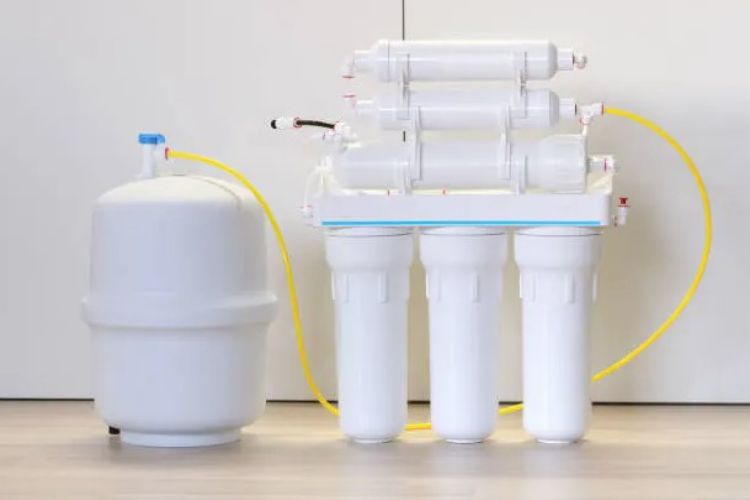 Reverse osmosis is a process used to remove impurities from water by compelling it through a semi-permeable membrane. It has tiny pores that allow water molecules to pass through but block larger particles such as salts, minerals, and bacteria. The process is called “reverse” osmosis because it requires an external pressure to be applied to the water, which is the opposite of what occurs naturally in osmosis.
Reverse osmosis is a process used to remove impurities from water by compelling it through a semi-permeable membrane. It has tiny pores that allow water molecules to pass through but block larger particles such as salts, minerals, and bacteria. The process is called “reverse” osmosis because it requires an external pressure to be applied to the water, which is the opposite of what occurs naturally in osmosis.
Table of Contents
✒️Principles of Reverse Osmosis
Experts from United Water & Air assert that the principles behind reverse osmosis are based on the properties of semi-permeable membranes and the movement of water molecules. The semi-permeable membrane used in RO is typically made of thin cellulose acetate or polyamide films. The membrane has tiny pores that are big enough to allow water molecules to pass through but small enough to block other particles.
In this process, the water is forced through the membrane using an external pressure. The pressure is applied to the water on the side with the impurities, causing the water molecules to go through the membrane, leaving the impurities behind. The purified water is collected on the other side of the membrane.
It works based on the principle of concentration gradients. When a semi-permeable membrane separates two solutions of different concentrations, the solvent (in this case, water) will flow from the region of lower solute concentration (pure water) to the area of higher solute concentration (impure water). This movement is called osmosis. However, when external pressure is applied to the dirty water, the flow of water molecules is reversed, and the pure water is forced through the membrane, leaving behind the impurities.
✒️Equipment Used in Reverse Osmosis
Reverse osmosis requires specialized equipment to apply pressure to force the water through the membrane. The equipment used in reverse osmosis includes a pump, a membrane module, and a recovery system.
The pump is used to apply pressure to the impure water and force it through the membrane. The membrane module contains the semi-permeable membrane and is where the filtration occurs. The recovery system is used to collect and store the purified water.
✒️Applications of Reverse Osmosis
It is a widely used process with many applications in industry and everyday life. Some of the most common applications of reverse osmosis include:
- Desalination: The process removes salt and other impurities from seawater to make it suitable for drinking and irrigation.
- Industrial Water Treatment: It is used in many industries to treat water for industrial processes, such as the production of electronics, pharmaceuticals, and chemicals.
- Household Water Treatment: RO systems are used in many households to remove impurities from tap water, improving its taste and quality.
- Wastewater Treatment: This process is used in wastewater treatment plants to remove contaminants from wastewater before it is released into the environment.
- Agriculture: It treats irrigation water, improving crop yields and reducing the need for fertilizers.
Reverse osmosis is a robust water treatment process with many applications in industry and everyday life. Understanding the principles of reverse osmosis and the equipment used is essential for successfully implementing the strategy.






